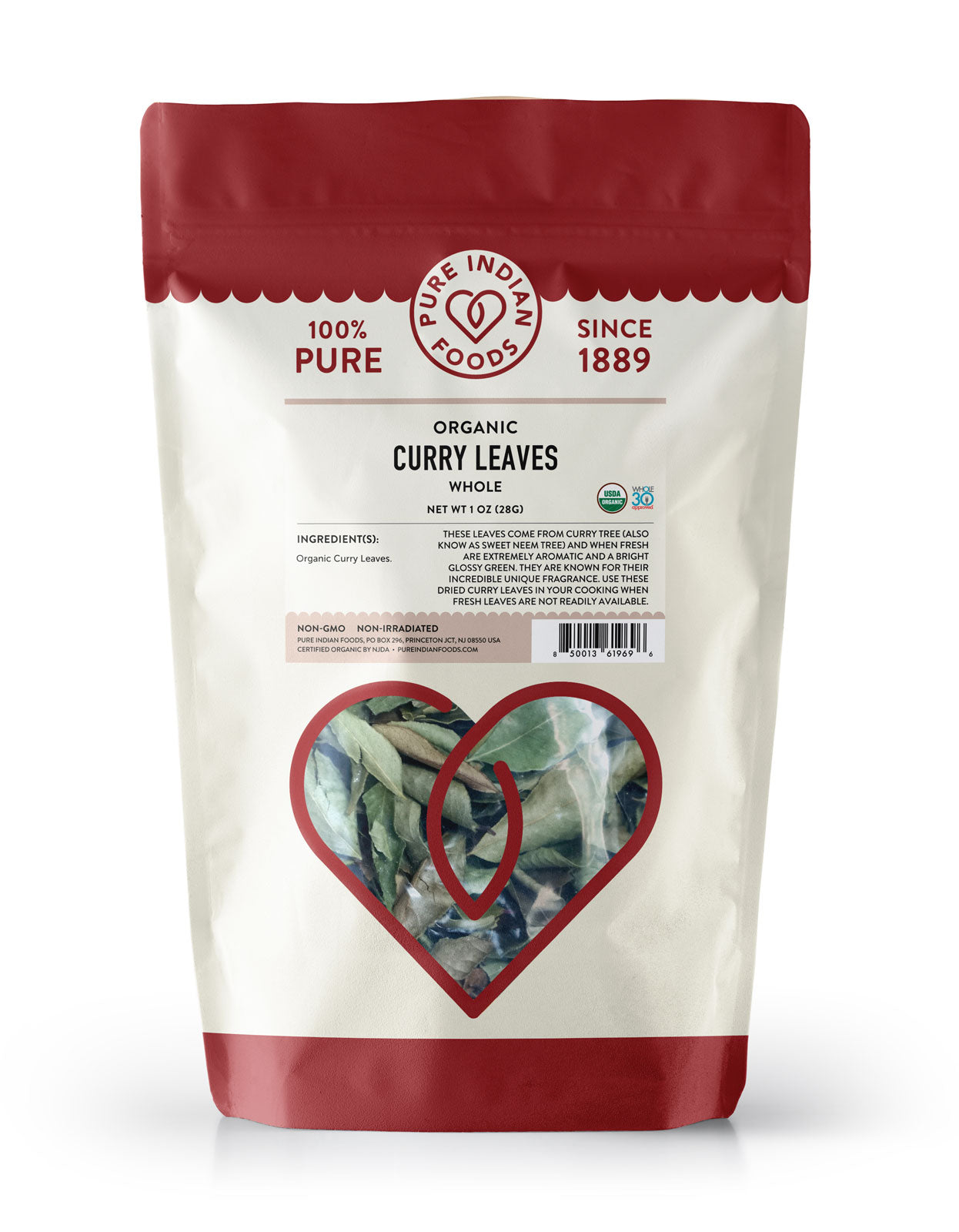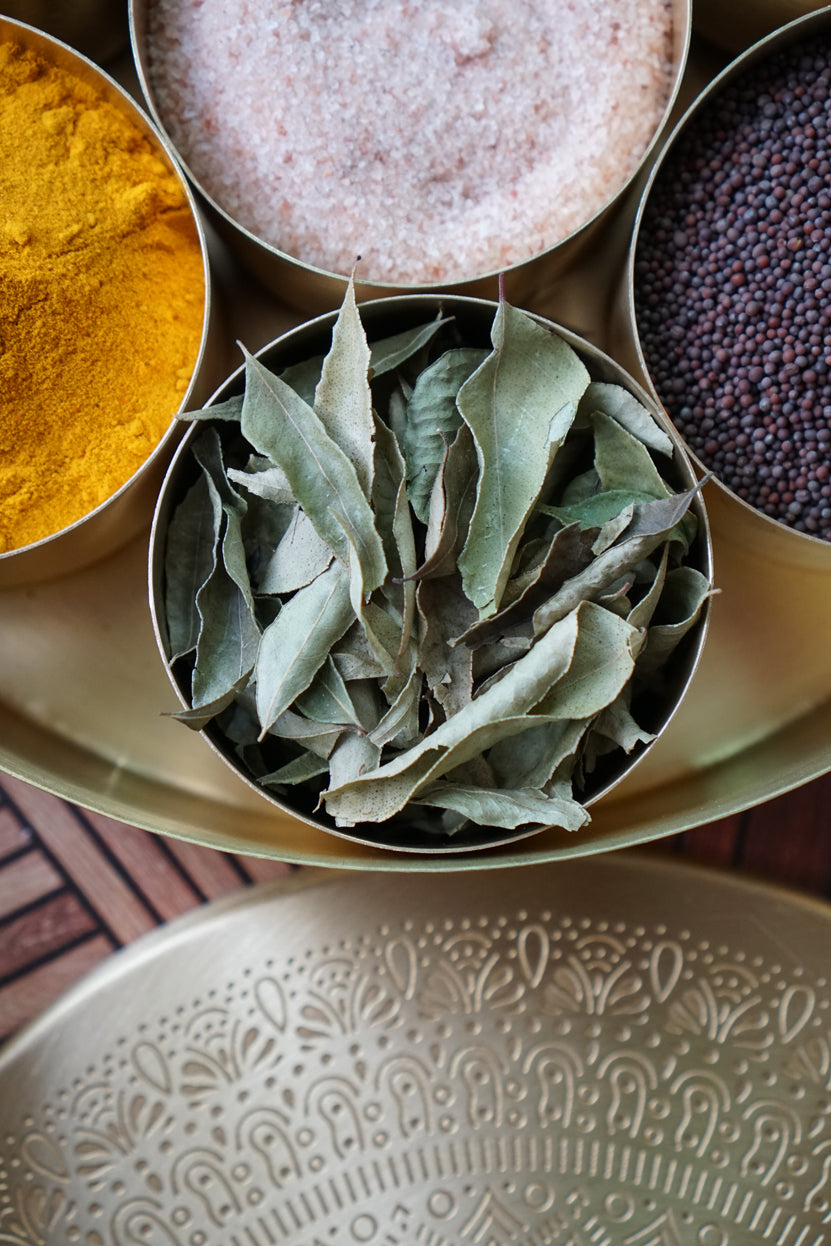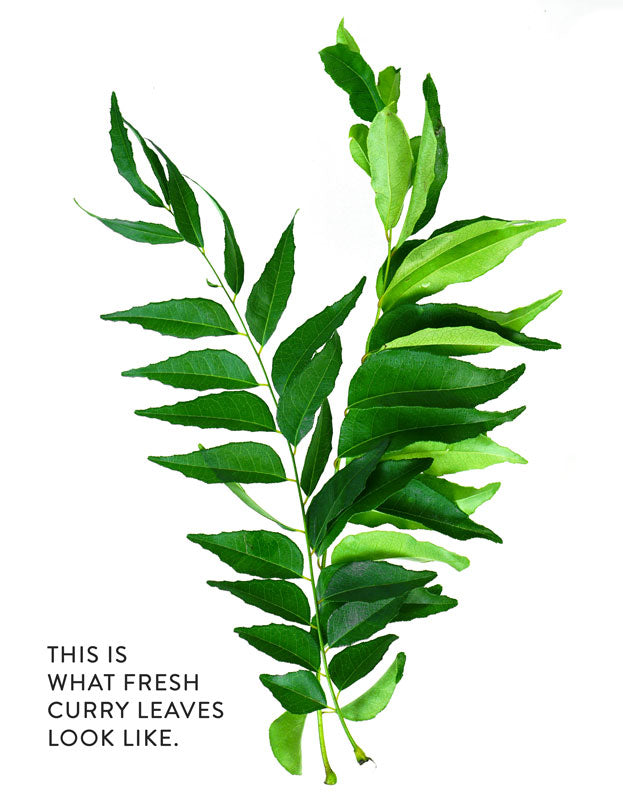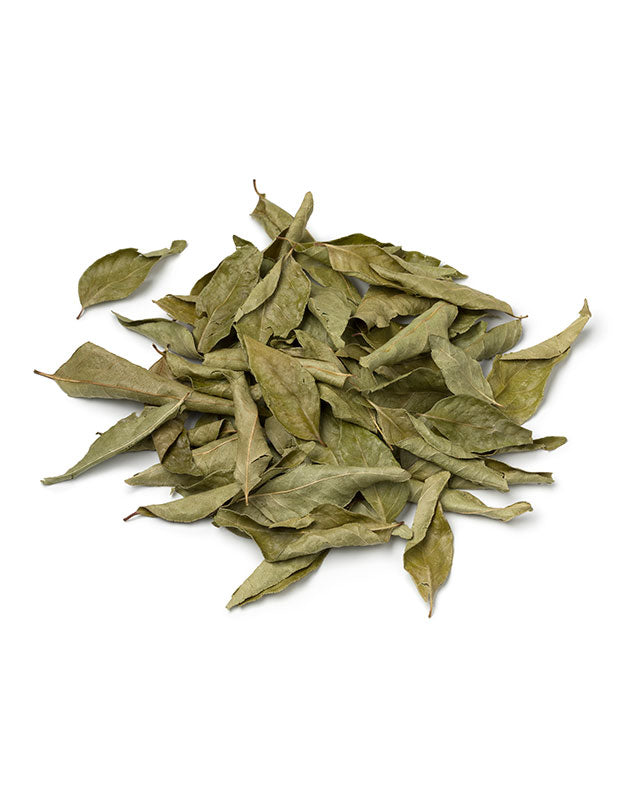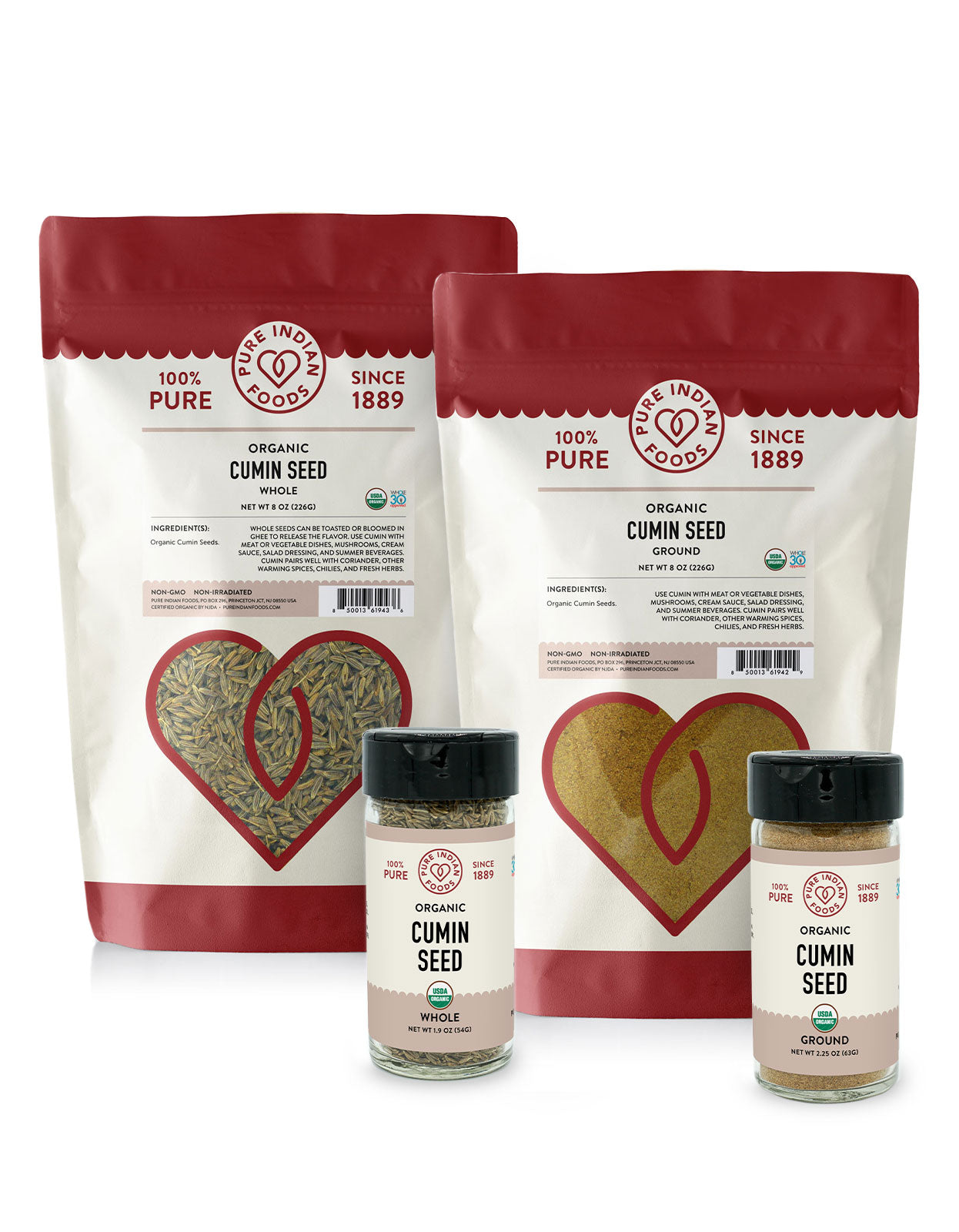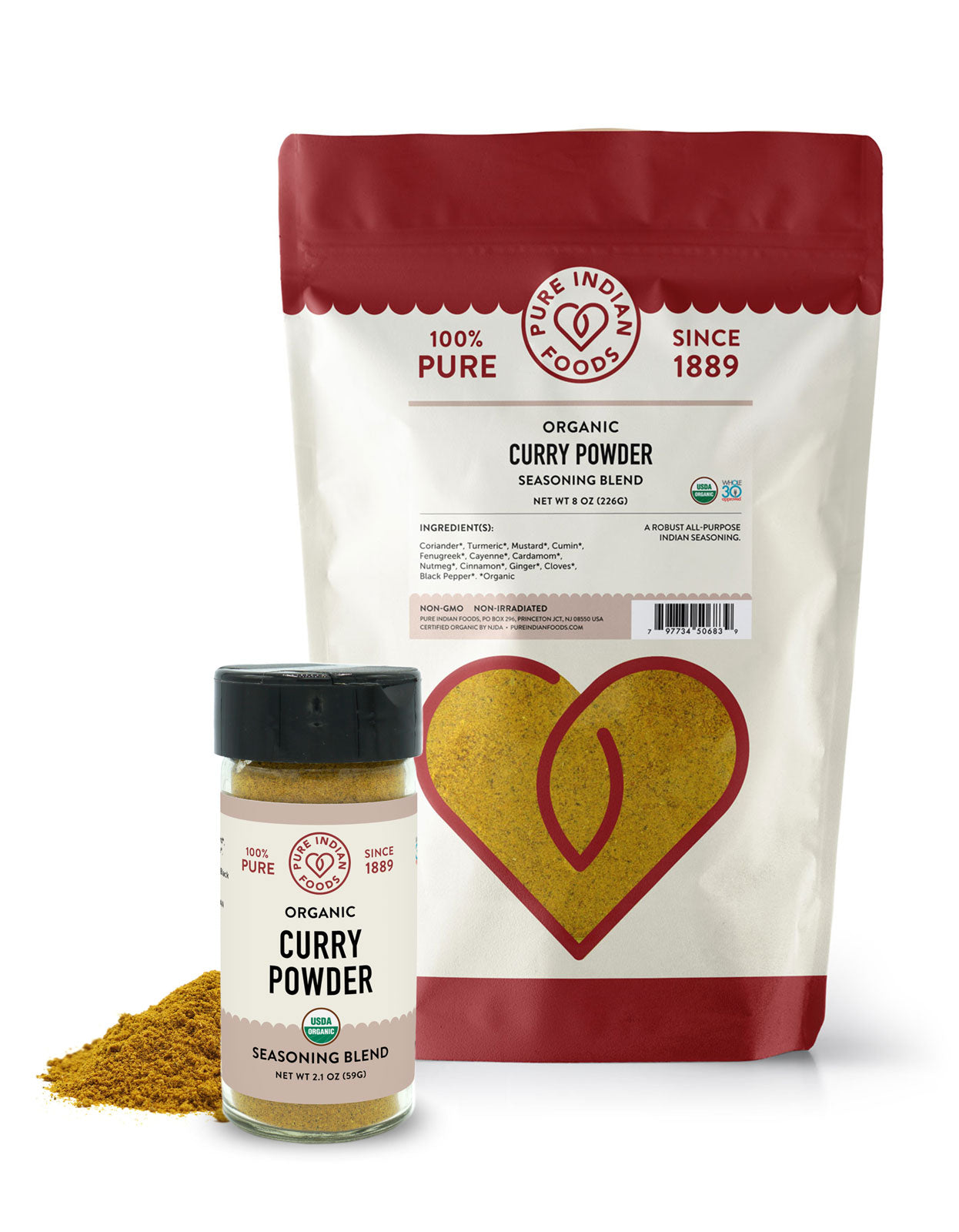What are curry leaves?
Organic curry leaves come from the curry tree (also know as sweet neem tree). With a taste like a curry seasoning mix, these dried curry leaves are delightfully aromatic and a bright glossy green. They are known for their incredible unique fragrance. Use these leaves in your cooking when fresh leaves are not readily available.
These are whole dried curry leaves, which means they are not ground or powdered. However, they are dried leaves, so they may be cracked or broken in the package.
Species: Murraya koenigii
Other names: Kari, barsunga (Bengali), pindosin (Burmese), gai leu yiph (Cantonese), karry blad (Danish), kerriebladerer (Dutch), feuilles de curry (French), curryblatter (German), kari patta, meetha neem (Hindi), aley kari (Hebrew), curry levelek (Hungarian), fogli di cari (Italian), daun kari (Indonesian/ Malaysian), kore rihu (Japanese), karibue (Kannada), khibe (Laotinan), kareapela (Malayalam), kadhi limbu (Marathi), karriblader (Norwegian), folhas de caril (Portuguese), bowala (Punjabi), listya karri (Russian), karapincha (Singhalese), hojas de curry (Spanish), bizari (Swahili), bignay (Tagalog), kariveppilai (Tamil), karepeku (Telegu), bai karee (Thai), and la cari (Vietnamese).
Appearance: When fresh, curry leaves are bright green and glossy. Dried curry leaves are a pale green.
Typically used: Whole as a seasoning and removed before serving.
Origin: USA.
Flavor: Very unique; like curry! Some have compared the "spicy" taste as similar to the peel of a lemon or tangerine.
Aroma: Incredibly aromatic when fresh.
How to Use Dried Curry Leaves
Use dried curry leaves with dals, samosas, dosa fillings, chutneys, snacks, sambars, soups, breads, rice, kofta, and vegetables. Our organic curry leaves give a zesty flavor to yogurt-based dishes, and also go well with vegetable dishes, such as fried cabbage, lentils, beans, okra, or eggplant. The dried curry leaf is removed before serving and not eaten whole. It releases flavor when toasted ghee, and this mixture can then be stirred into foods. Organic curry leaves can also be toasted, ground, or crushed to season or garnish soups, sambars, and curries.
Recipes with Curry Leaves
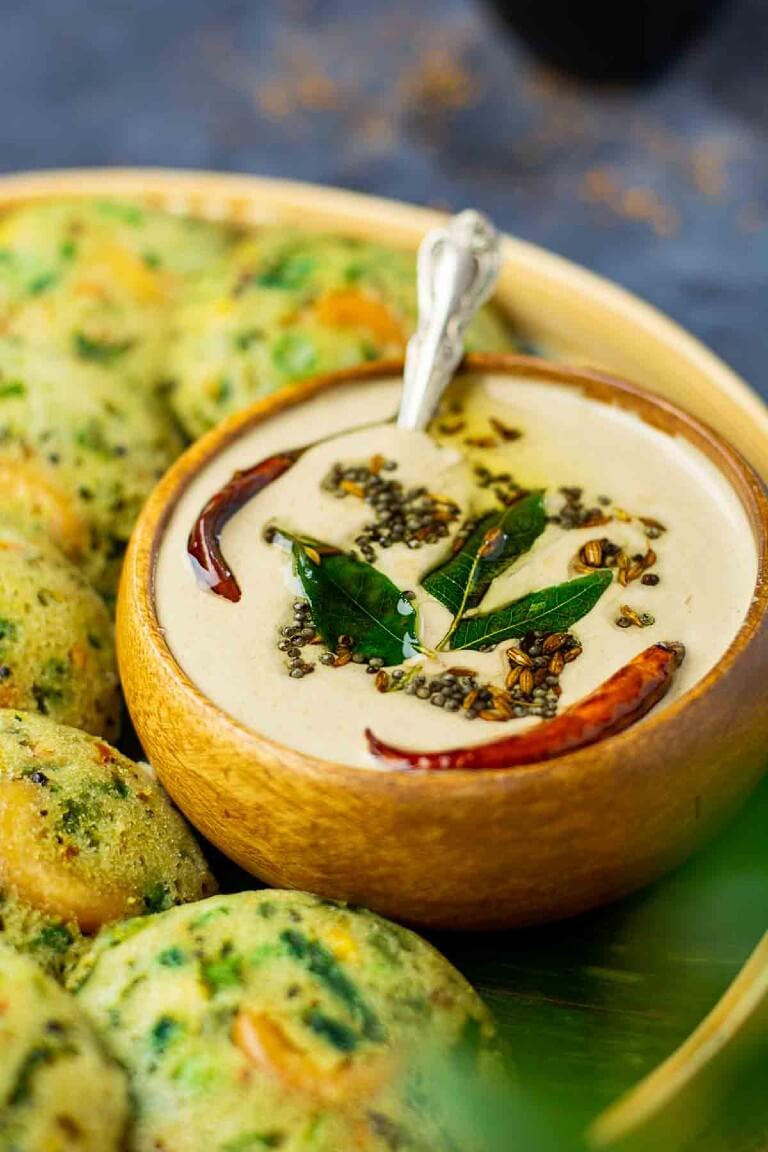
Peanut Chutney Recipe
Peanut Chutney is a nutty, tangy, and mildly spicy condiment common to South Indian cuisine, where it's more commonly called groundnut chutney. It's delicious served with a host of other dishes -- everything from biryani to samosas. Once you try it, you'll soon be addicted!

Insane Loaded Curry Fries Recipe
Decadence is the name of these loaded curry fries. Say hello to layering not one, not two, but THREE sources of rich curry flavor! Piping hot french fries get piled on a plate with a Madras curry sauce, mild cheese, curry aioli, crumbled bacon, and green onions. And it's all topped with our organic dried curry leaves. It's insane. And awesome. And so family-friendly.

Rava Idli Recipe
Traditionally, Idli is a soft, savory rice cake made with fermented black lentils. But if you're a savvy person-on-the-go without the time or inclination for a lengthy fermentation process, we've got you covered with this much quicker Rava Idli recipe. Rava Idli is simpler alternative to traditional Idli, and with just a handful of our ingredients and spices, you can make sure your homemade Rava Idli packs a delicious nutritional punch.
READ OUR FULL SHIPPING POLICY HERE
CONTINENTAL USA
Orders over $125 qualify for a flat rate of $9.99. This applies to the Continental USA outside of Northeast region. This does not include Alaska or Hawaii.
ONLY NORTHEAST USA
Orders over $75 qualify for a flat rate of $5.99. This applies ONLY to the Northeastern part of the United States, including CT, DE, DC, ME, MD, MA, NH, NJ, NY, PA, RI, VT, VA.
WHAT IS YOUR HANDLING TIME?
Pure Indian Foods orders are processed, shipped, and delivered on business days: Monday-Friday (excluding weekends and major holidays). Please allow 2-4 business days for processing depending on product availability and order volume.
HOW LONG IS TRANSIT TIME
USA: On average, 5-10 business days.
Canada: On average, 6-10 business days, but sometimes longer to get through customs.
International: We do not have an estimated time for other countries.
INTERNATIONAL ORDERS:
International orders outside the USA may attract additional customs, taxes and duties upon entry to your country; this is the responsibility of the customer. If the package is refused by your country's customs department and it it sent back to us, the shipping cost will be non-refundable. Please be aware, there may be delays.
DO YOU OFFER LOCAL PICK UP?
We are online-only.
We want our customers to be satisfied with the quality of our products. If a product is damaged during shipping or you are unhappy with the product, simply let us know within 14 days after delivery, and we will try to resolve the situation to your satisfaction in a way that is fair to both parties. We are a small company and try to do our best for each situation. Please contact us if you have any questions prior to purchasing.
NOT SATISFIED?
If you receive the order and you are not satisfied with it, you can return the merchandise in original packaging within 14 days along with the receipt. Once we receive your package, we will refund the amount charged of the items returned. Unfortunately, we cannot refund the shipping costs, unless the product is damaged or defective.
ORDER REFUSED
If you refuse the order or if the carrier was not able to deliver it, we will give full refund less the shipping charges.
INCORRECT ADDRESS
If the shipping address that you supply is found to be incomplete or incorrect then you are responsible for the additional charges imposed by the shipping company for correcting the address.
RETURNED TO SENDER / UNDELIVERABLE
If we send you a shipment and it gets returned back to us as it was undeliverable to the address provided, we will refund the amount you had paid for the products only. Unfortunately, we cannot refund the shipping cost. We offer the option to reship the same order to an alternative address for an additional shipping fee.
Reviews are submitted by independent customers and do not represent the opinions or claims of Pure Indian Foods. These statements have not been evaluated by the FDA.
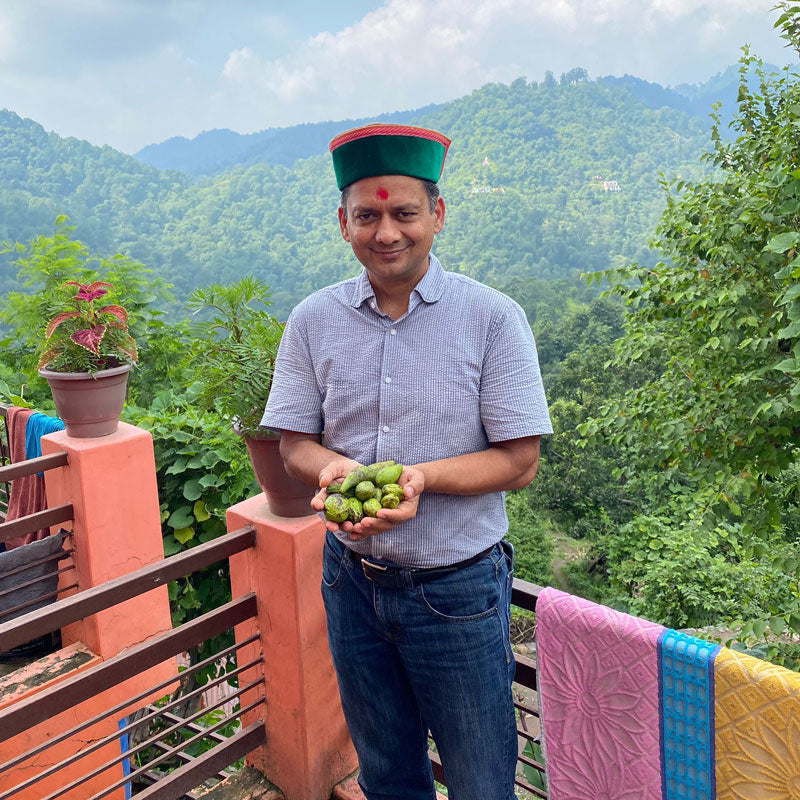
Hi! I'm Sandeep.
I travel to India, Asia, South America, and Europe to bring you back some of the most pristine, pure, organic clean ingredients in the world. All the products you'll find here at Pure Indian Foods are ones that me and my family use personally.
My family has been making ghee since 1889. Today, my wife, Nalini (aka "The Ghee Lady"), carries on this tradition. She still makes all the ghee and tightens every jar by hand.
We are passionate about bringing you traditional and nourishing foods. It's our labor of love and service to human-kind. Thank you for supporting our small family business.
